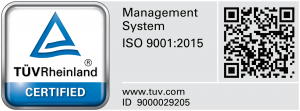

In the era of Industry 4.0, a revolution marked by the integration of digital technologies into industrial processes, the Internet of Things (IoT) stands as a transformative force. Industry 4.0 emphasizes the interconnectedness of machines, data exchange, and automation to create "smart factories" and optimized production systems. At the heart of this revolution is the seamless connectivity enabled by networking technologies, which facilitate the exchange of real-time data between devices, systems, and the cloud. Weidmüller, a leader in industrial connectivity and automation solutions, offers a range of managed and unmanaged switches tailored to the demands of IoT applications.

The Internet of Things (IoT) refers to the network of physical objects or "things" that are embedded with sensors, software, and other technologies, enabling them to connect and exchange data with other devices and systems over the Internet. These objects can range from everyday items such as household appliances, wearable devices, and vehicles to more complex systems like industrial machinery and infrastructure.
The key idea behind IoT is to create a network where these devices can communicate with each other, gather and analyse data, and take action based on the information they receive. This can lead to increased efficiency, automation, and improved decision-making in various fields such as healthcare, agriculture, transportation, manufacturing, and smart homes, among others.
For example, in a smart home scenario, IoT devices like smart thermostats, lights, and security cameras can be interconnected to create an intelligent system. The thermostat might adjust the temperature based on occupancy detected by motion sensors, lights can be turned on or off remotely, and security cameras can send alerts to your phone when they detect motion.
In industrial settings, IoT can enable predictive maintenance of machinery, where sensors collect data on equipment performance and health. This data is then analysed to predict when maintenance is needed, reducing downtime and preventing costly breakdowns. Overall, IoT has the potential to revolutionize how we interact with our environment, making systems more efficient, convenient, and interconnected.

In the realm of networking simplicity, unmanaged switches stand tall as the go-to solution for quick and easy connectivity. These switches, often considered the workhorses of small networks, offer a "plug & play" experience, ideal for setups where simplicity is key. Whether it's connecting a few devices in a home office or creating a basic network in a small industrial setup, unmanaged switches provide a straightforward path to connectivity.
On the other end of the spectrum, managed switches bring a wealth of advanced features and capabilities to the table. Beyond basic connectivity, these switches offer redundant topologies, ensuring network resilience with backup paths in case of link failures. In the world of IoT, where data is king, managed switches shine by handling traffic with finesse. They can isolate, prioritize, and monitor data flows, optimizing network performance for critical applications.

While unmanaged switches offer simplicity, they also come with limitations, especially in the realm of security. Each port on an unmanaged switch becomes a potential entry point to the network, raising concerns about unauthorized access and vulnerabilities. Meeting stringent security standards like the IEC 62443 can be challenging with unmanaged switches.

Managed switches step up to the plate with a suite of security features designed to protect IoT ecosystems. From blocking unused ports to implementing static MAC bonding, these switches bolster network security. Compliance with standards like the IEC 62443 is within reach, ensuring that industrial IoT networks remain resilient against cyber threats.
Weidmüller's managed switches offer a suite of robust security features designed to safeguard industrial IoT networks against cyber threats. These features include;


Unmanaged switches make basic communication between PLCs (Programmable Logic Controllers) and IOs (Input/Output devices) possible. However, they lack the specialized tools needed to optimize traffic for industrial protocols, leaving some performance optimizations on the table.

With managed switches, industrial protocols find a home in the network infrastructure. These switches implement protocol stacks, treating themselves as integral elements for PLCs. Specific features for protocols like Profinet and Ethernet/IP ensure optimized traffic flow, enhancing the performance of industrial IoT applications.

Weidmüller's managed switches often utilize ORing networking technology, which provides seamless redundancy in network topologies. ORing ensures that in the event of a link failure, data continues to flow without interruption. This technology is particularly vital in critical industrial environments where downtime is not an option.
In an ORing network setup, switches are interconnected in a ring topology. Each switch actively participates in the ring, forwarding data packets in a predefined direction. Also, if a link or switch fails, the ORing technology automatically re-routes the data traffic in the opposite direction, maintaining uninterrupted communication.

For mission-critical applications, Weidmüller's managed switches may incorporate OChain networking, offering a high level of fault tolerance and network resilience. OChain allows for the creation of redundant rings within the network, ensuring that data can always find an alternate path in case of a network segment failure.
Ochain creates multiple redundant rings within the network infrastructure, offering redundant paths for data transmission. In the event of a link failure, Ochain intelligently re-routes through an alternate ring, ensuring uninterrupted communication. The ability to create multiple rings provides a higher level of fault tolerance, as there are multiple backup paths available for data transmission.

As industries embrace the transformative power of IoT within the framework of Industry 4.0, Weidmüller's switches emerge as pivotal components. They not only facilitate seamless connectivity and data optimization but also fortify industrial networks against cyber threats. Weidmüller's commitment to security, innovation, and reliability ensures that industrial IoT networks remain resilient, efficient, and ready to meet the challenges of the digital age. In the journey towards Industry 4.0, Weidmüller stands as a beacon of technological advancement, driving the evolution of industrial processes and the realization of smart, connected systems.
From the simplicity of unmanaged switches to the sophistication of managed solutions, Weidmüller provides the tools for industries to thrive in the digital age of connectivity. With ORing and OChain technologies, Weidmüller ensures that IoT networks stay resilient, reliable, and ready for the challenges of Industry 4.0.


